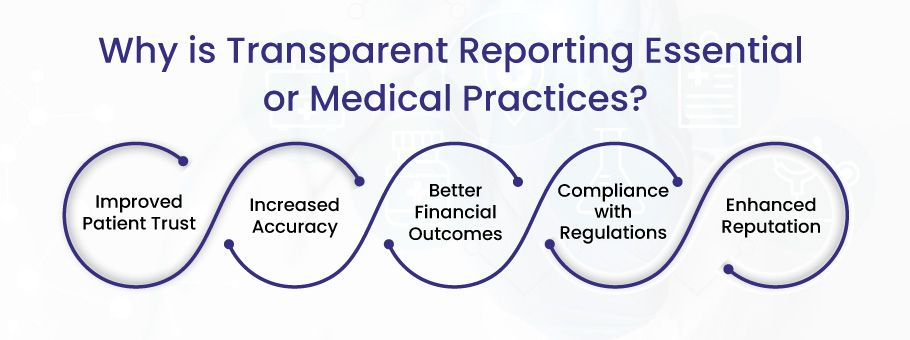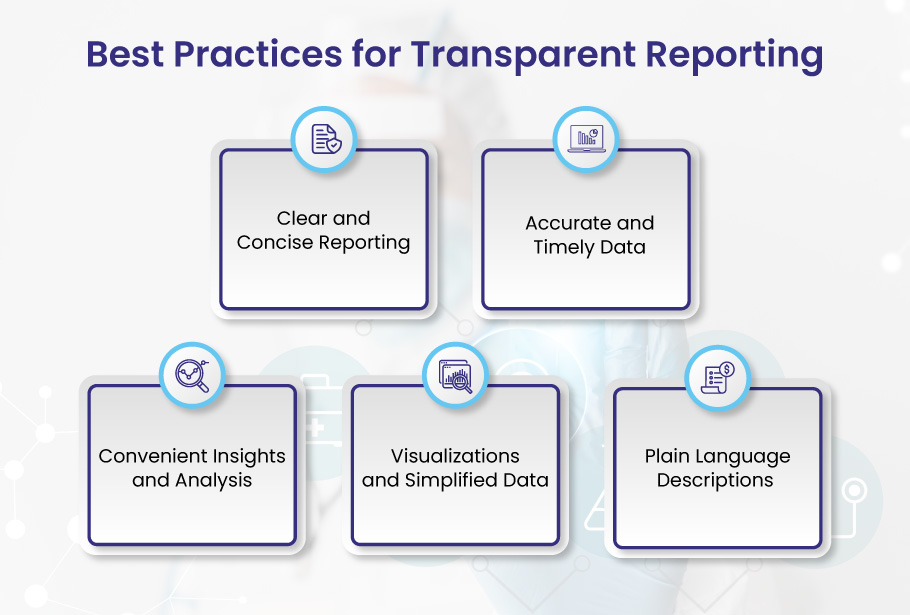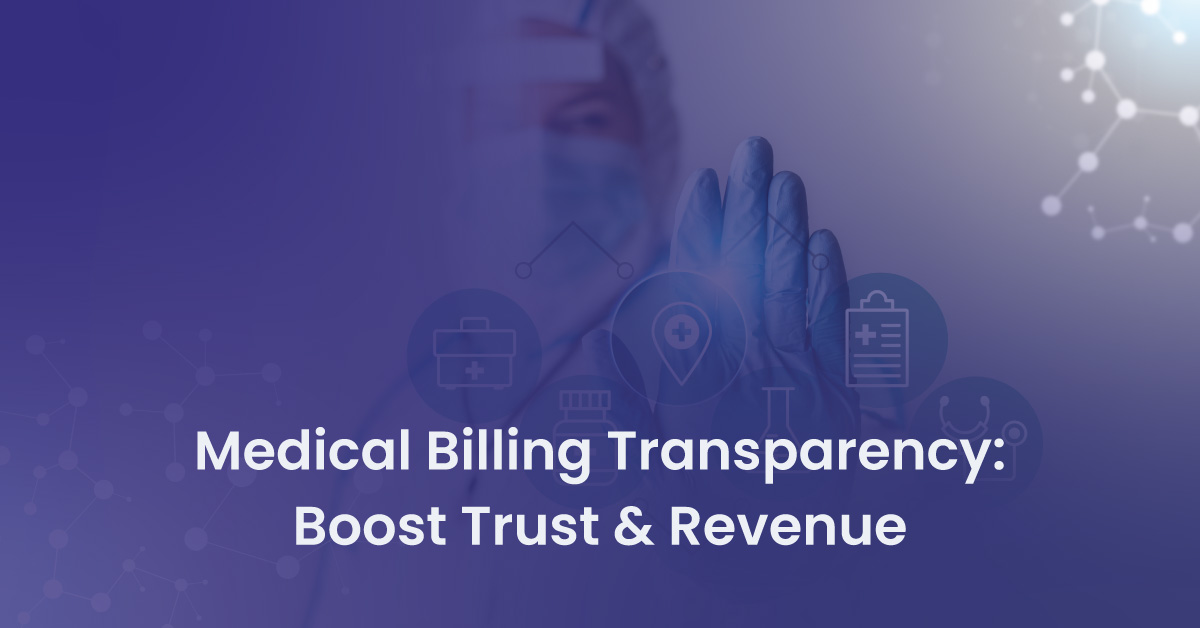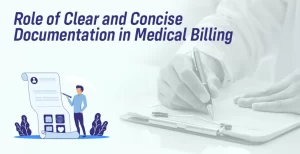Medical billing can be a complex and frustrating experience for patients, with many struggling to understand the charges associated with their care. For healthcare providers, achieving transparency in medical billing reporting is essential, as it can help build trust with patients and improve financial outcomes. Additionally, transparent billing can lead to enhanced collections, as patients are more likely to pay their bills when they understand the charges and have confidence in the provider’s accuracy. In this blog, you will learn the significance of transparency in medical billing and best practices to ensure a transparent billing process.
Why is Transparent Reporting Essential for Medical Practices?
Transparency in medical billing makes practices efficient in delivering their services. It helps in enhancing patient satisfaction and maximizes a practice’s revenue.
Let’s see why transparency is essential in the medical billing process.

Improved Patient Trust
Transparent reporting plays a crucial role in establishing patient trust and satisfaction. Medical practices can help patients better understand the costs associated with their care with transparent billing information. As a result, patients are more likely to trust the accuracy and fairness of their bills, leading to higher satisfaction with their healthcare experience.
Increased Accuracy
When providers prioritize transparency, they are more likely to thoroughly document services and charges, reducing the risk of errors and disputes. This increased accuracy benefits patients and helps medical practices avoid conflicts and streamline billing processes.
Better Financial Outcomes
Transparent reporting directly impacts financial outcomes for both patients and providers. Patients who understand their bills are more inclined to pay them thoroughly and on time. This reduces the need for time-consuming and costly collection efforts. This leads to improved collections, lower costs, and better provider financial performance.
Compliance with Regulations
Transparent reporting also ensures compliance with healthcare regulations, like HIPAA, such as patient privacy, billing accuracy, and fraud prevention. By adopting transparent billing practices, medical practices demonstrate their commitment to regulatory compliance, which reduces the risk of costly violations and penalties. Additionally, transparent reporting can help identify areas where providers may be at risk for noncompliance and take corrective actions accordingly.
Enhanced Reputation
Transparent reporting benefits current patients and plays a significant role in attracting new patients and retaining existing ones. A medical practice known for its transparent billing practices is more likely to be perceived as trustworthy and reliable, making it an attractive choice for prospective patients. Transparent billing practices can also contribute to patient loyalty, as satisfied patients are more likely to continue using the services of a provider they trust and recommend them to others.
Best Practices for Transparent Reporting

Implementing these best practices for transparent reporting can significantly enhance patient trust, satisfaction, and comprehension of medical billing. Here are some best practices they must follow to improve the transparency in the billing process.
Clear and Concise Reporting
A clear and concise reporting format ensures transparency in medical billing. This practice involves creating billing statements that are easy to read and understand, with a well-organized layout, and using simple language to convey the necessary information. This approach minimizes confusion and frustration for patients, enabling them to comprehend their medical bills better.
Accurate and Timely Data
Accuracy and timeliness are essential components of transparent reporting. Medical practices should maintain up-to-date billing records and record all charges correctly. Providing accurate and timely data builds trust with patients and reduces the likelihood of billing disputes and errors, which can be costly and time-consuming.
Convenient Insights and Analysis
Presenting insights and analysis in a manner that is easy for patients to understand is another critical aspect of transparent reporting. This can be achieved by breaking down complex billing data into simpler terms and explaining medical jargon or billing codes. The goal is to enable patients to grasp the rationale behind the charges, ultimately fostering trust and confidence in the billing process.
Visualizations and Simplified Data
Incorporating visualizations like charts and graphs can effectively simplify complex data and make it more accessible to patients. Visual representations can provide an at-a-glance overview of charges, allowing patients to grasp the information presented quickly. When used appropriately, visualizations can enhance patient comprehension and increase transparency in medical billing reporting.
Plain Language Descriptions
Using plain language descriptions of medical procedures and billing codes is an essential best practice for transparent reporting. Medical billing often involves complex terminology and codes that may be unfamiliar to patients. Providers can help patients better comprehend their bills and the rationale behind the charges by providing clear, easy-to-understand explanations of these terms and codes.
Conclusion
Transparent reporting is a critical aspect of medical billing that can help improve patient trust, provider accuracy, and financial outcomes. By adopting best practices and leveraging tools and technologies like EHRs, practice management systems, and analytics software, providers can deliver clear insights and analyses that help patients better understand their bills and make informed healthcare decisions. Transparent reporting is a valuable investment for medical practices looking to enhance their medical billing practices and build stronger relationships with patients.




